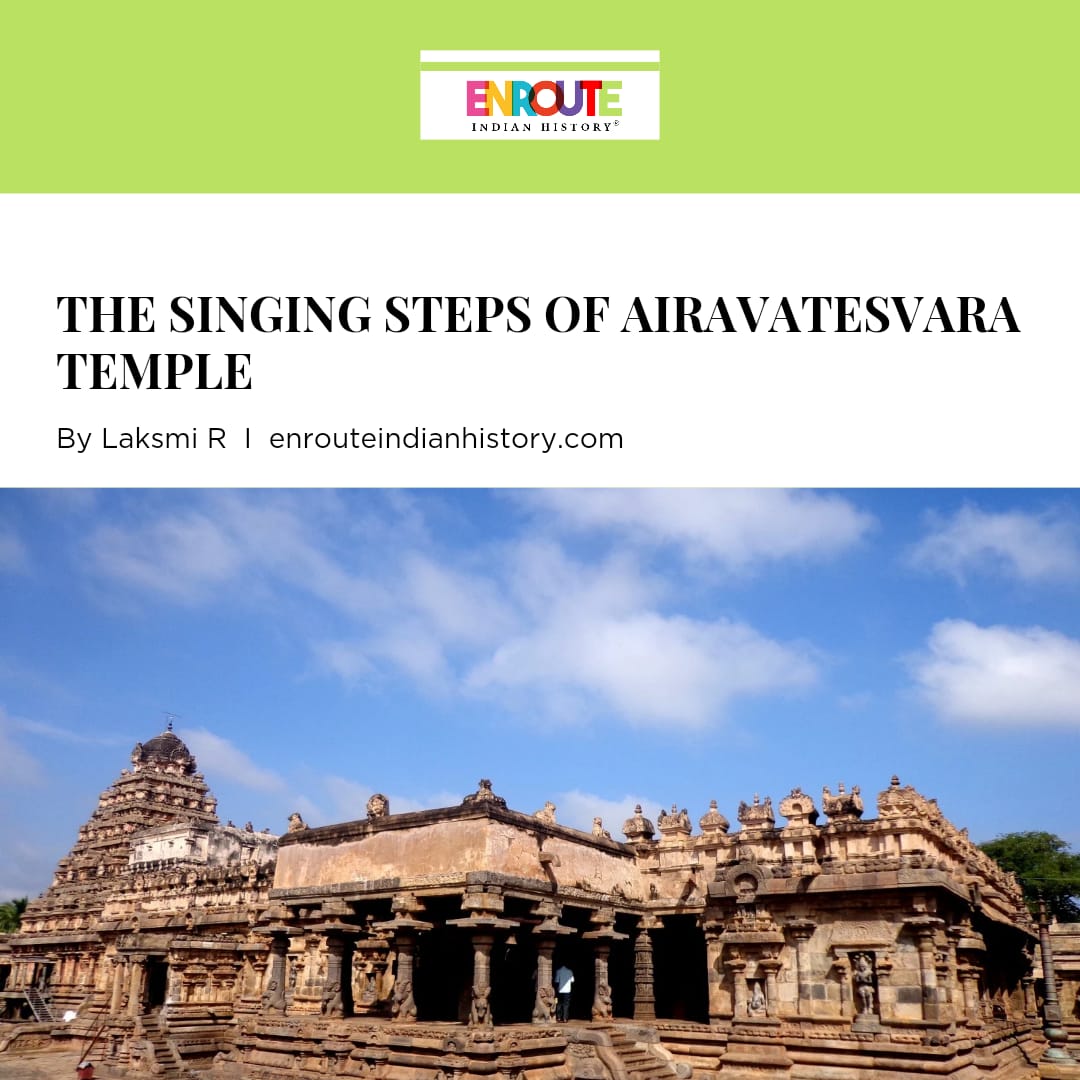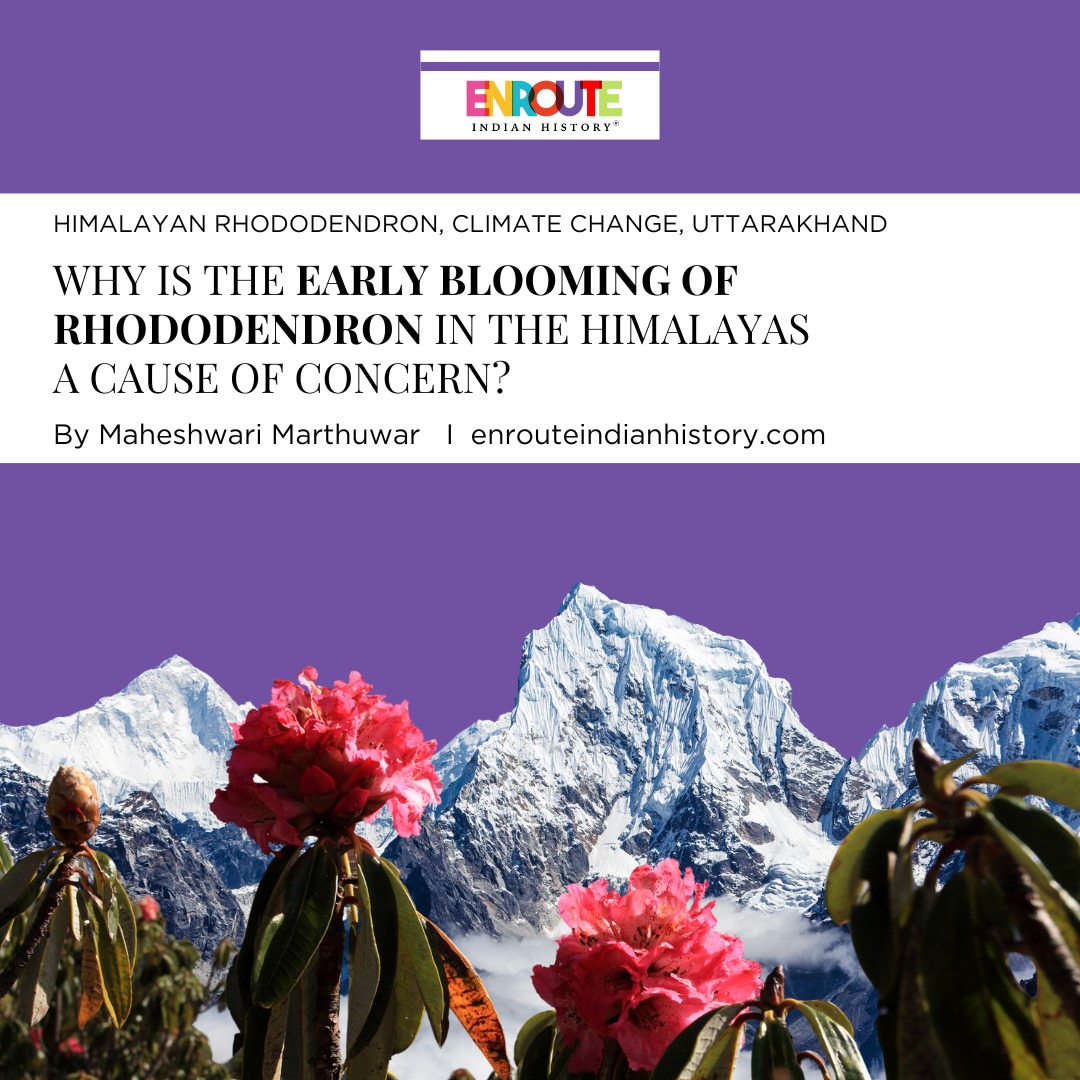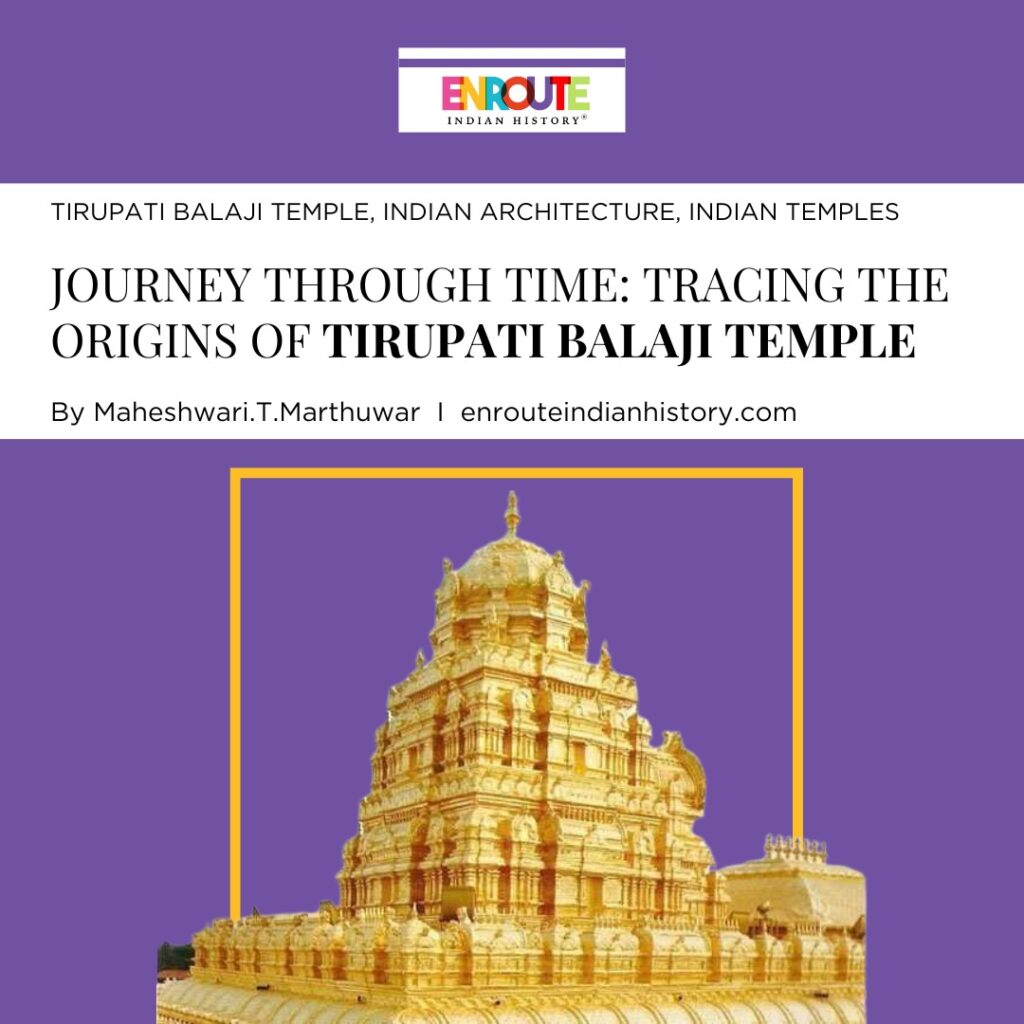
“वेंकटाद्रि समं स्थानं ब्रह्माण्डे नास्ति किंचना;
वेंकटसा समो देवो न भूतो न भविष्यति”
“In the whole Universe, there is no region equal to Venkata Hills
And neither is nor will be, a deity whose glory can parallel the might of Sri Venkata”
– Brahmanada Purana
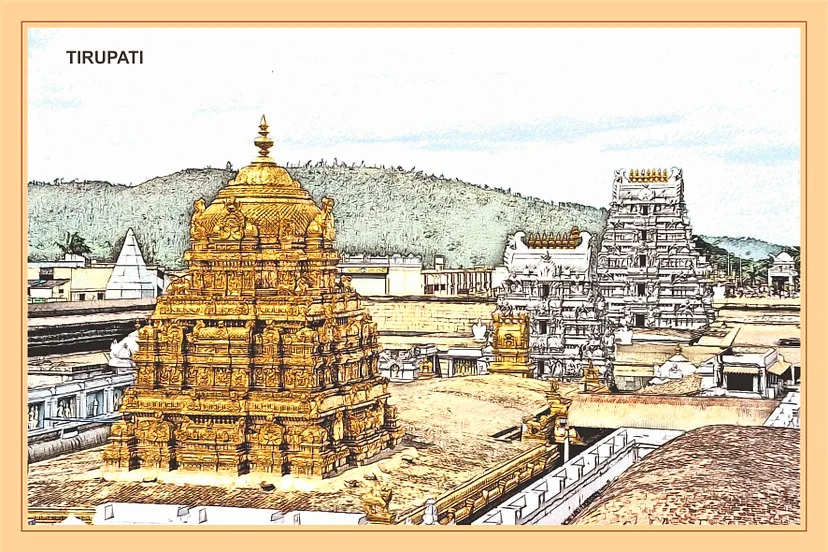
Sri Venkateswara Swamy Temple Or Tirupati Balaji Temple
The Tirupati Balaji Temple is a sacred and significant Hindu pilgrimage site located in the hill town of Tirumala, in the state of Andhra Pradesh, India. This magnificent temple, dedicated to Lord Venkateswara, also known as Balaji, is visited by millions of devotees every year. It is believed to be one of the oldest and richest temples in India, with a history dating back thousands of years. In this article, we will take a journey through time and delve into the origins and evolution of the Tirupati Balaji Temple, exploring the Legends, Stories, and Beliefs that have made it a revered and treasured place of worship for Hindus around the world.
Sri Tirupati Balaji, a powerful manifestation of Vishnu in the Kaliyuga Era, has garnered immense popularity worldwide, attracting a diverse followership that includes both commoners and some of the wealthiest and most influential individuals of our time. For his devotees, the sacred region of Tirumala, known as Sri Kshetra, is revered as “Kaliyuga Vaikuntha,” symbolizing the abode of Vishnu in this age. Furthermore, Tirupati Balaji is hailed as “Kaliyuga Varada,” the benevolent bestower of blessings in the Kaliyuga era. This mighty deity is often described as “Sat-chit-ananda,” representing the embodiment of supreme bliss, pure consciousness, and the essence of devotion and divinity.
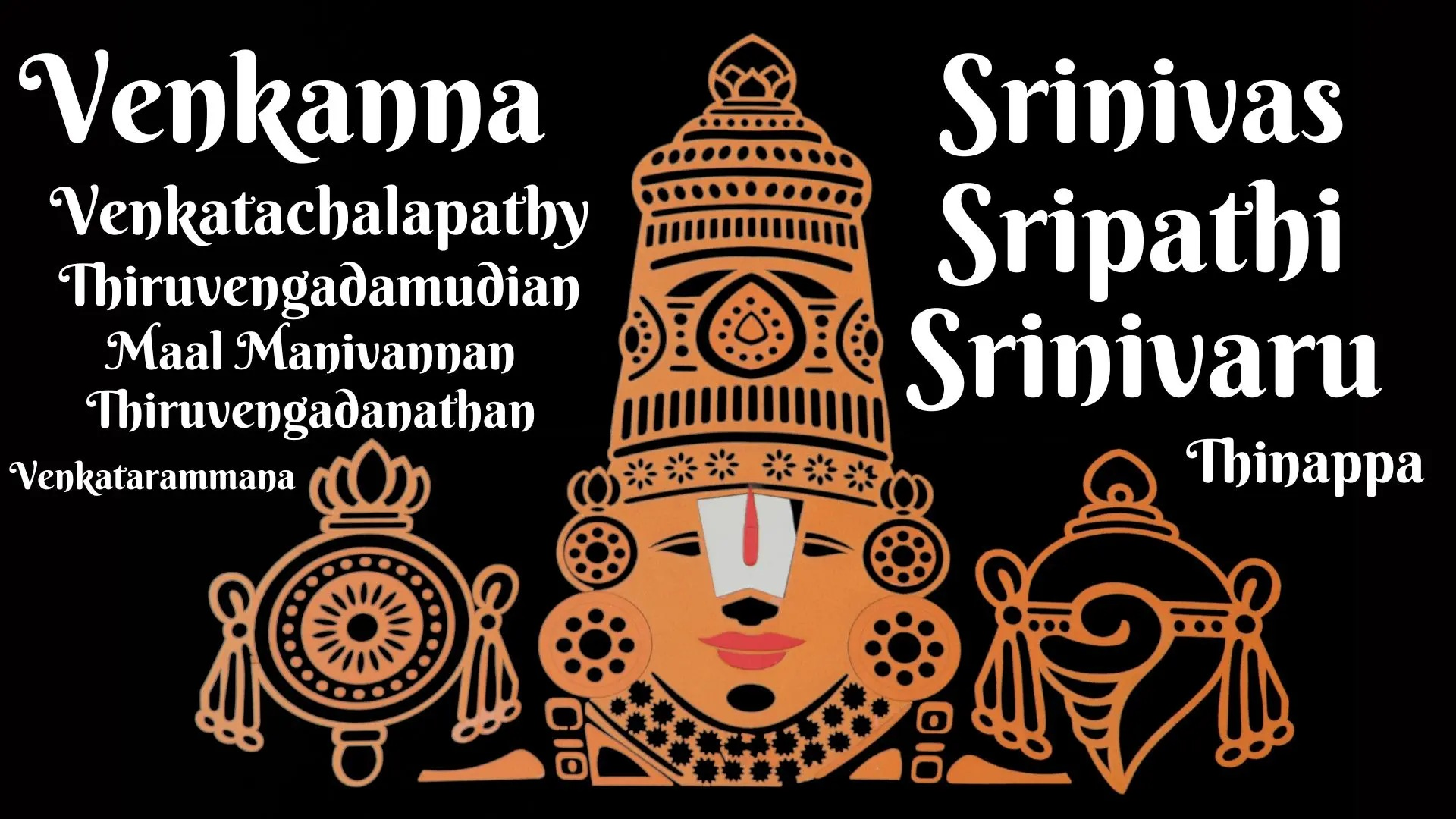
The Various Titles of Tirupati Balaji
Thiru, meaning sacred or Lakshmi, and Pati, meaning Lord, is a commonly used epithet for the Lord of Tirumala. However, his devotees have bestowed upon him numerous names. Some of the names by which Tirupati Balaji is known include Venkanna, Venkatachalapathy, Srinivas, Sripathi, Srinivaru, Thiruvengadamudian, Maal Manivannan, Thiruvengadanathan, Thinappa, and Venkatarammana. Another popular title for him is “Venkateshwara,” which translates to “ven” (to burn), “kata” (past sins), signifying “he who burns the sins of one’s past,” Sri Venkateshwara. Similar to Vishnu, who is referred to as Sri Hari (Hari meaning “he who steals,” the sins or the fruit of one’s actions), Sri Venkateshwara is venerated and honored for cleansing the soul from the effects of one’s actions and enabling the devotee to embark on the path of Dharma anew.
The Sanctified Geographical Setting of Balaji’s Home
When embarking on a journey through Tirupati, the multitude of temples and sacred spaces that encompass the central shrine of Sri Tirupati Balaji is truly breathtaking. The Tirumala mountain range, known as “the sacred garland,” is comprised of seven peaks, each believed by Vaishnava followers to represent the seven hoods of Adi Shesha, the divine serpent of Vishnu.
Magnificent Tirumala Hills are :
- Sheshadri, also known as the peak of Shehsa, where Vishnu rests upon his serpent companion.
- Neeladri, the peak associated with Neela Devi.
- Garudadri, the peak named after Garuda, Vishnu’s bird mount.
- Anjanadri, the peak dedicated to Anjani/Hanuman.
- Vrishabhadri, the Hill of Vrishabha (Nandi).
- Narayanadri, the Hill of Narayana.
- Venkatadri, the abode of Sri Venkata.
In the Tamil language, the Tirumala hills are referred to as the Nedion Kunram, with “Nedion” meaning “Vishnu” and “Kuram” meaning “Hill”. These hills are considered a part of the sacred Mount Meru, where the divine being Adi Varaha chose to reside in order to assist humanity in attaining salvation. The central concept revolves around aiding individuals who struggle to achieve a realization of God through the paths of Karma Yoga, Bhakti Yoga, or Dhyana Yoga. The arrival of the Tirumala Hills on Earth is attributed to Vishnu’s mount, Garuda. It is believed that the seven hills or peaks represent the seven heads of Adisesha, the king of all nagas, who uncoils to propel time forward into the future. Traditional attire for men consists of Dhotis, while women typically wear Sarees. Tonsure, the act of shaving one’s head, and the application of Tilaka, a religious mark on the forehead, are significant practices observed in Tirumala Tirupati. The journey to these majestic hills commences from Alipiri, where a colossal sculpture of Garuda, Vishnu’s bird mount, stands with hands clasped in the Anjali mudra.
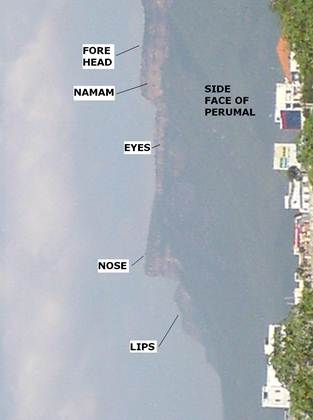
The natural arch in the Tirumala Hills, situated one kilometer north of the Temple, is a remarkable geological marvel. Referred to as Silathoranam in Telugu, the term ‘Sila’ denotes rock while ‘thoranam’ signifies an arch. This arch spans 8 meters in width and 3 meters in height.
There are numerous significant temples surrounding the sanctum of Tirupati, where devotees flock throughout the year to seek the blessings of Balaji’s entourage. These temples hold immense power and are revered by the worshippers. Let us explore some of the prominent temples in the vicinity of Tirupati:
Sri Govindarajaswami Temple:
This temple is dedicated to the elder brother of Sri Venkateshwara, who is depicted in a reclining pose similar to Vishnu’s Anantashayana Murti. Constructed by the Vaishnava saint Ramanujan, the temple showcases exquisite sculptures and carvings that narrate the tales from Hindu Puranas.
Sri Kapileshwarswami Temple:
Built in remembrance of sage Kapila, this Shaiva temple holds great significance. It is believed that sage Kapila had a divine encounter with Lord Shiva at this very spot. The central deity worshipped here is the Shiva Linga, accompanied by the goddess Parvati. Devotees visit the Kapila Teertha, a waterfall, to take a holy dip and seek the blessings of Sri Kapileshwarswami.
Sri Kodandaramaswami Temple:
Dedicated to Kodandadhari Rama, who carries his mighty Kodanda bow, this temple also houses Lakshmana and Sita. The main festive celebration here revolves around Rama’s visit to Balaji’s home, accompanied by the Brahmotsava and Rama Navami festivities.
Sri Gangamma Temple:
Goddess Gangamma, believed to be the sister of Lord Balaji, is honored in this temple. The temple hosts grand festivities during the Gangamma or Ganga Jatra, a seven-day festival held in May.
Padmavati Temple:
This shrine is dedicated to goddess Padmavati, the wife of Sri Tirupati Balaji. According to Vaishnava beliefs, goddess Lakshmi descended to earth from Vaikunta and performed rigorous penance while residing in the water reservoir of this temple. After twelve years, she emerged from a golden lotus in the water body, earning it the name “Padma Sarovar” and becoming known as “Padmavati.” These temples hold immense spiritual significance and attract devotees from far and wide who seek the divine blessings of the deities.
- The Shiva Temple in Sri Kalahasthi, located 38 kilometers away from the Tirupati Temple, is known for the river Swarnamukhi flowing nearby. Legend has it that the river changed its course at the request of the sage Agastya. This temple, revered as “Dakshina Kailasha” or the Kailash of the South, is where Lord Shiva is worshipped in the form of vayu or air, one of the Panchabhoota or five elements. The flame of the sanctum lamp dances mysteriously, even without any breeze, symbolizing the presence of the Lord. The shrine of Kannappa, the hunter-devotee who achieved Moksha here, is also part of this temple.
- The Kalyana Venkateswara Swamy Temple in Narayanavanam is where Lord Tirupati Balaji wed Devi Padmavati. Alongside the main deities, images of Andal, Prayaga Madhavaswami, and Sri Varadarajaswami are also worshipped in this temple.
- At the Srivari Paduka Mandapam, devotees pay homage to the footprints of Venkateshwara by placing the god’s sandals on their heads. They perform the Parikrama, or circumambulation, around the temple before embarking on their journey to Tirupati.
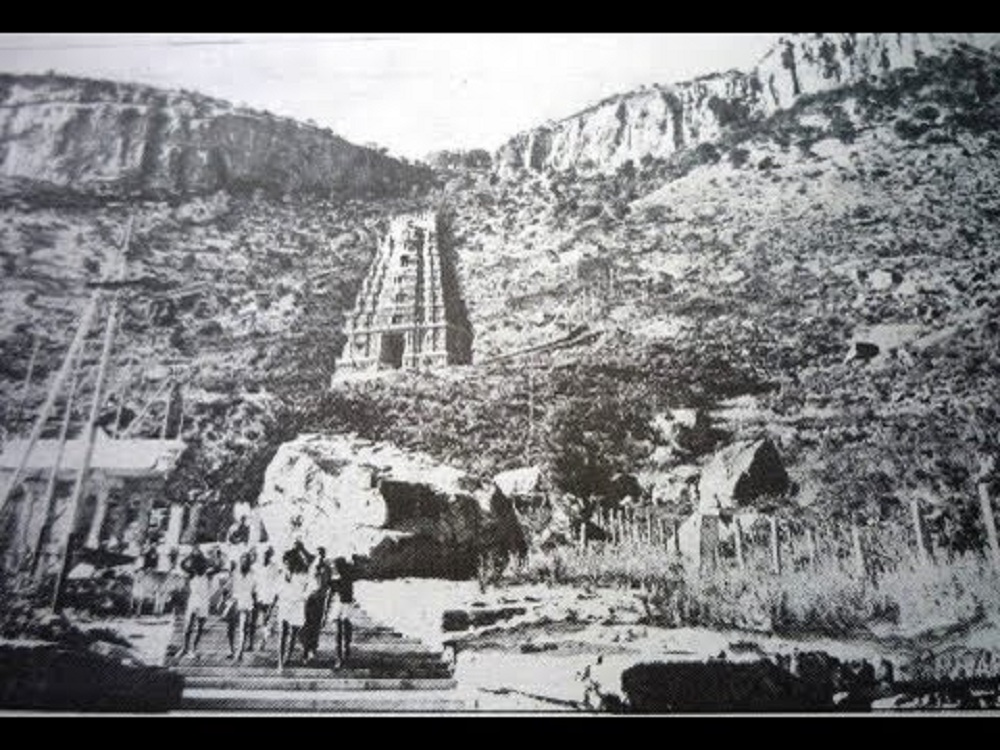
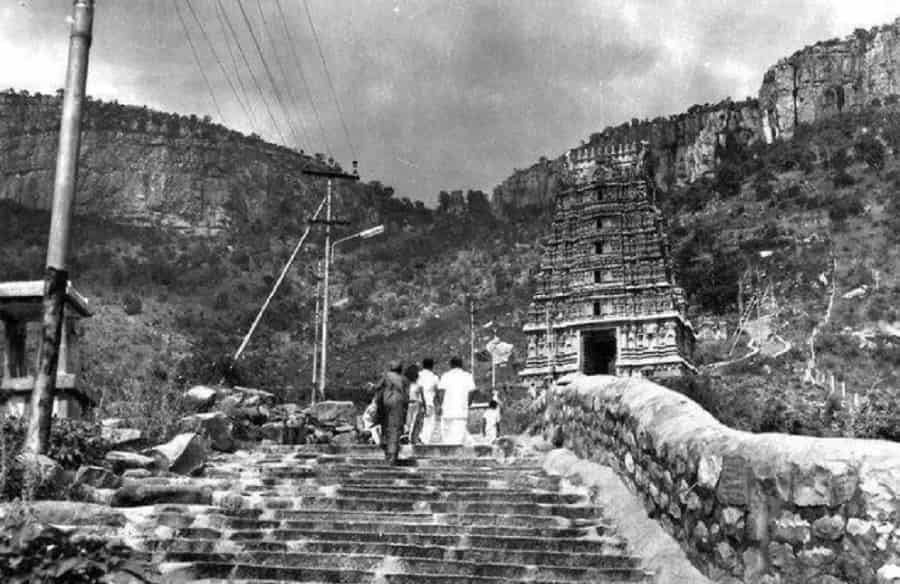
A Retrospective Analysis of Tirupati’s Past
The Sri Tirumala hill range, believed by many to have been first mentioned in the Rig Veda, is considered a sacred site. In the Kamban Ramayana, written in Tamil, it is described as a place where the supreme truth is revealed, housing the 4 Vedas and other sacred scriptures. The Sri Venkatanchala Mahatmya, also known as Thiruvenkata Mahatmya Teertha, contains stories from the Mahapuranas that narrate the divinity of Balaji. This compilation was put together by Pasindi Venkatatthuraivar (Jiyar Ramanujayyan). While numerous Puranas, epics, and regional sources are filled with legends about Tirupati, the historical origins of the region remain a profound mystery.
The holy spot of Tirumala, also known as Sri Kshetra, is mentioned in early Tamil sources as “Aruva Nadu,” the land of Aruvalars, a hunting tribe ruled by a powerful chief named Puli. Following the Mauryan Period, the region came under the rule of the Satavahanas and later the Pallavas. During the reign of the Gupta King Samudragupta, the region briefly slipped from the control of the Pallavas but was soon reclaimed by them. Subsequently, the Pallavas, Cholas, Telugu chieftains of the Pallavas, Pandyas, and Yadavarayas governed the region, each contributing to the construction and reconstruction of shrines in and around Tirupati.
In the Medieval Period period, when South Indian temples, including Sri Ranganatha, were under attack by Sultanate armies, Tirupati Balaji served as a refuge for the idol of Ranganatha and remained protected due to its location away from the usual routes of the invading armies. The rise of the Kakatiyas in the South eventually led to the Vijayanagara Kings taking control of Thondaimandalam, which encompassed Tirumala.
The Vijayanagar Kingdom played a pivotal role in the golden age of the Tirumala Temple, fostering its growth and prosperity.
Devaraya II, a ruler from the Sangama Dynasty, displayed immense devotion towards Tirupati Balaji and played a crucial role in the restoration of the Veda Parayanam in the sanctum of Venkateshwara. Following in his footsteps, the final ruler of the Sangama Dynasty, Saluva Narasimha Deva, also exhibited unwavering loyalty to Tirupati and generously contributed donations and support to the shrine.
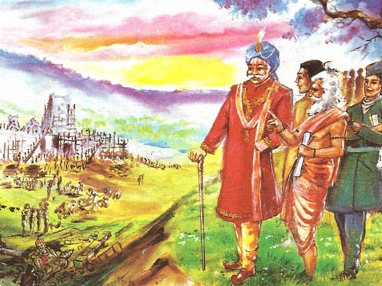
The Saluva Dynasty succeeded the Sangama Dynasty, and among its rulers, Saluva Narasimha Deva emerged as the most devout follower of Tirupati. Narasimha Deva’s grandfather, Mangideva Maharaja, had previously offered gold to the Vimana and Shikhara of the Tirupati shrine. Inspired by his grandfather’s actions, Narasimha Deva further honored Tirupati by installing the statue of Lakshmi Narasimha at the beginning of the journey path to Tirumala.
Sbsuequently, the Thuluva Dynasty came into power, with Krishnadevaraya as its prominent ruler. Krishnadevaraya not only held significant political influence but also demonstrated immense patronage towards culture and architecture. His deep devotion to Tirupati led him to visit the shrine on seven occasions, where he generously donated land and valuable items to the temple. Under his reign, the sacred region of Tirupati flourished and gained widespread popularity and reverence. The temple’s wealth and ensuring its sustenance by bestowing extensive tracts of land and making substantial contributions. Additionally, he implemented a system of administration and rituals that served as the bedrock for the temple’s present-day practices. The inception of the “Dhana Annaprasadam” scheme, which involves the distribution of free food, was also credited to him, and it continues to provide nourishment to numerous devotees on a daily basis. During this era, the temple experienced a surge in its opulence and prosperity as it received generous offerings in the form of gold, jewels, and land grants from both nobles and devotees. The construction of the illustrious ‘Rajagopuram,’ an imposing entrance tower, took place during the Vijayanagara Period, further enhancing the temple’s architectural magnificence.
Significant historical events and changes took place at the Tirupati Temple during the reign of the Sultans, Mughals, Marathas, and the East India Company.
-
The Impact of Muslim Rule
The Tirupati Temple, along with numerous other Hindu temples in India, encountered difficulties during the Era of Muslim rule. The area fell under the dominion of various Muslim Dynasties, such as the Delhi Sultanate and the Bahmani Sultanate, from the 14th to the 16th Centuries. Throughout this Period, the temple experienced frequent looting of its wealth and resources, resulting in a decline in its prosperity. Nevertheless, in spite of these adversities, the temple persevered, partly due to the support of local rulers who continued to be patrons of the temple. To safeguard its treasures from invaders, the temple’s riches were concealed in secure locations, and its religious ceremonies were conducted discreetly.
-
Maratha Influence
During the 18th century, the Maratha Rulers, led by Chhatrapati Shivaji and his successors, played a crucial role in the restoration of the temple to its former grandeur. They ensured the protection of the temple and generously contributed wealth and resources to revive its sacred rituals and traditions. In 1740, a sense of tranquility descended upon the region when Raghoji Bhonsle, a Maratha leader, emerged victorious over the Nawab of Karnataka and paid a visit to the Balaji shrine to express his reverence. He presented numerous valuable offerings to the deity, a gesture that was also mirrored by Saftar Ali, the Nawab’s son, who offered 50,000 rupees to the treasury of the Balaji temple as a gesture of peace towards the Marathas.
-
The British Era
During the Modern Period, after the Anglo-Mysore Wars, the British East India Company gained control over Carnatic or Karnataka, which included the temple and its valuable treasures. Due to a lack of resources, the rituals and offerings to the deity were temporarily halted. However, in 1843, with the establishment of British colonial rule in India, the Tirupati Temple came under the jurisdiction of the British government. Despite this, the British authorities adopted a policy of non-interference in religious affairs, allowing the temple to continue its operations without significant intervention. The administration of the temple was entrusted to hereditary trustees who were responsible for its governance.
Modern Administration and Developments
Following India’s Independence, the administration of the Tirupati Temple underwent significant changes. In 1933, the government of Madras (now Tamil Nadu) established the Tirumala Tirupati Devasthanams (TTD) to oversee the management of the temple. The TTD took charge of the temple’s finances, properties, and day-to-day operations. Under the guidance of the TTD, various initiatives have been implemented to enhance the temple’s infrastructure and services. The temple complex has witnessed expansions, including the construction of new guesthouses, dining halls, and queue complexes to accommodate the ever-growing number of devotees.
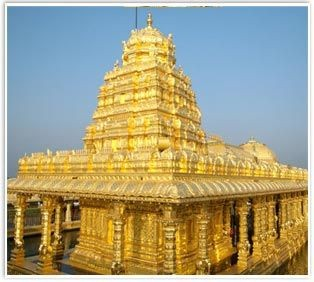
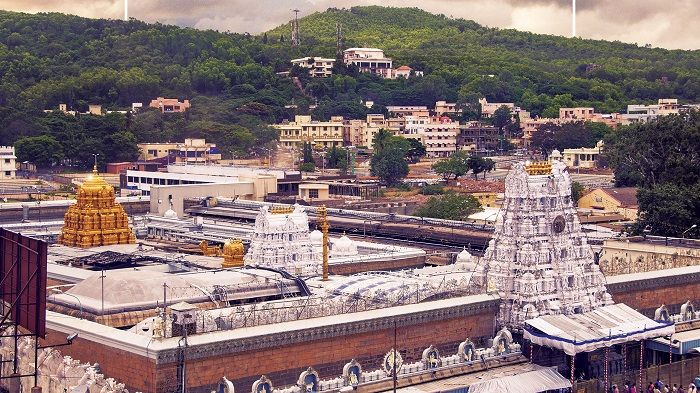
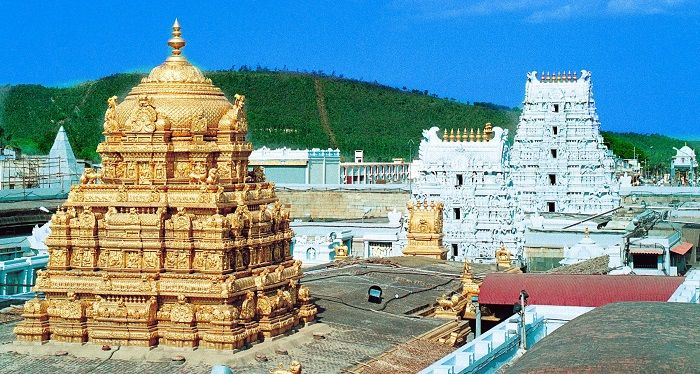
Architectural Style And Symbolic Imagery
The Tirupati Temple is widely recognized for its religious significance as well as its remarkable architectural design. This temple complex serves as a splendid representation of Dravidian styles of architecture, which is characterized by its towering entrance towers known as gopurams, intricately carved pillars, and exquisite sculptures. At the center of the temple complex lies the main shrine, where Lord Venkateswara, the deity, is housed. This sacred space, known as the Garbhagriha, is adorned with a gold-covered Vimana, or tower. The idol of Lord Venkateswara, crafted from black stone and standing at a height of approximately 8 feet, is embellished with gold and precious jewels, symbolizing the wealth and devotion of the temple’s followers. One of the most iconic elements of the temple is the towering Rajagopuram, which serves as the main entrance tower. Standing at an impressive height of around 140 feet, this structure is adorned with intricate sculptures and carvings that depict various episodes from Hindu mythology. Additionally, the temple complex encompasses several smaller shrines dedicated to different deities, such as Lord Rama, Lord Krishna, and Goddess Lakshmi, among others. Each of these shrines serves as a testament to the exceptional artistic and architectural skills of the craftsmen who contributed to the construction of the temple.
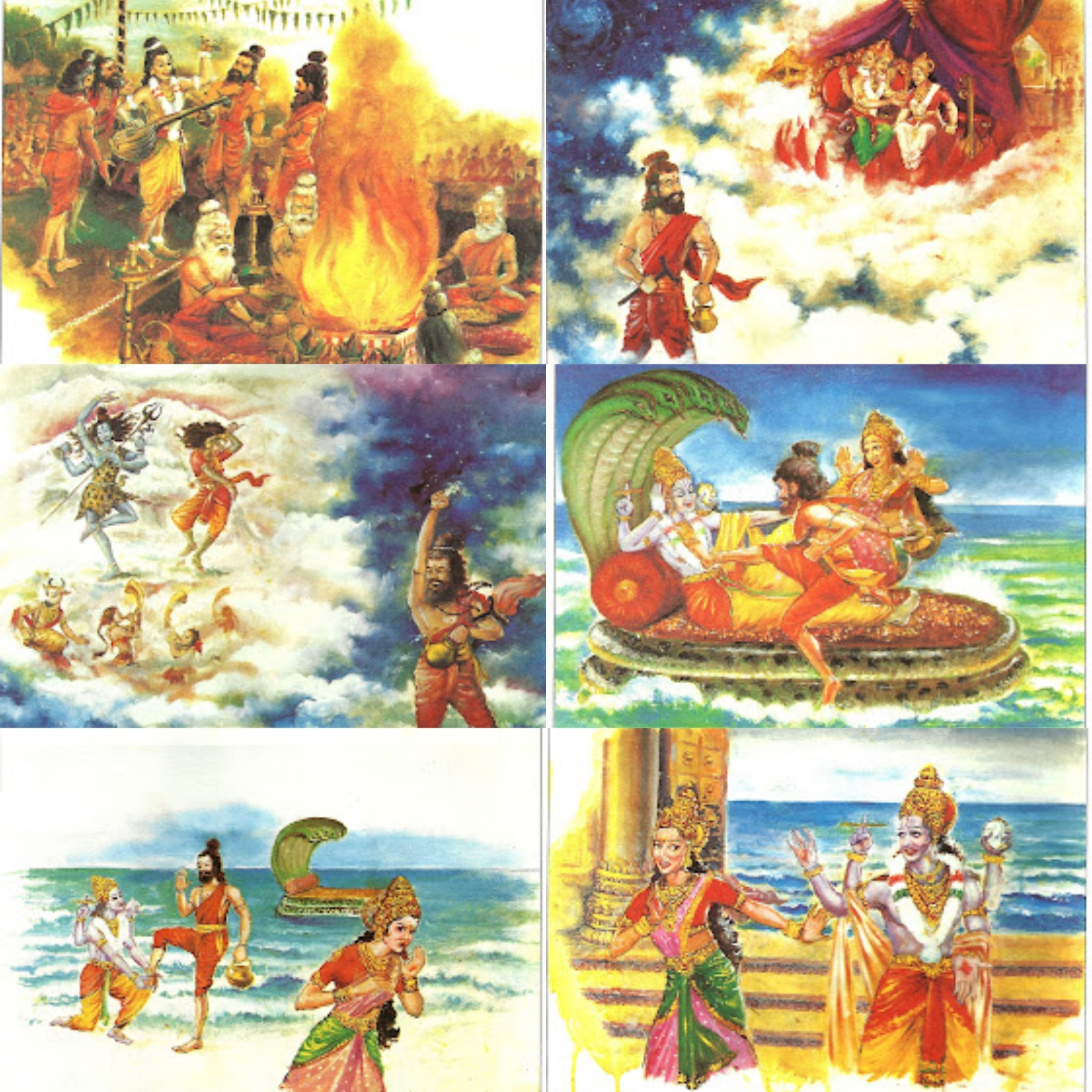
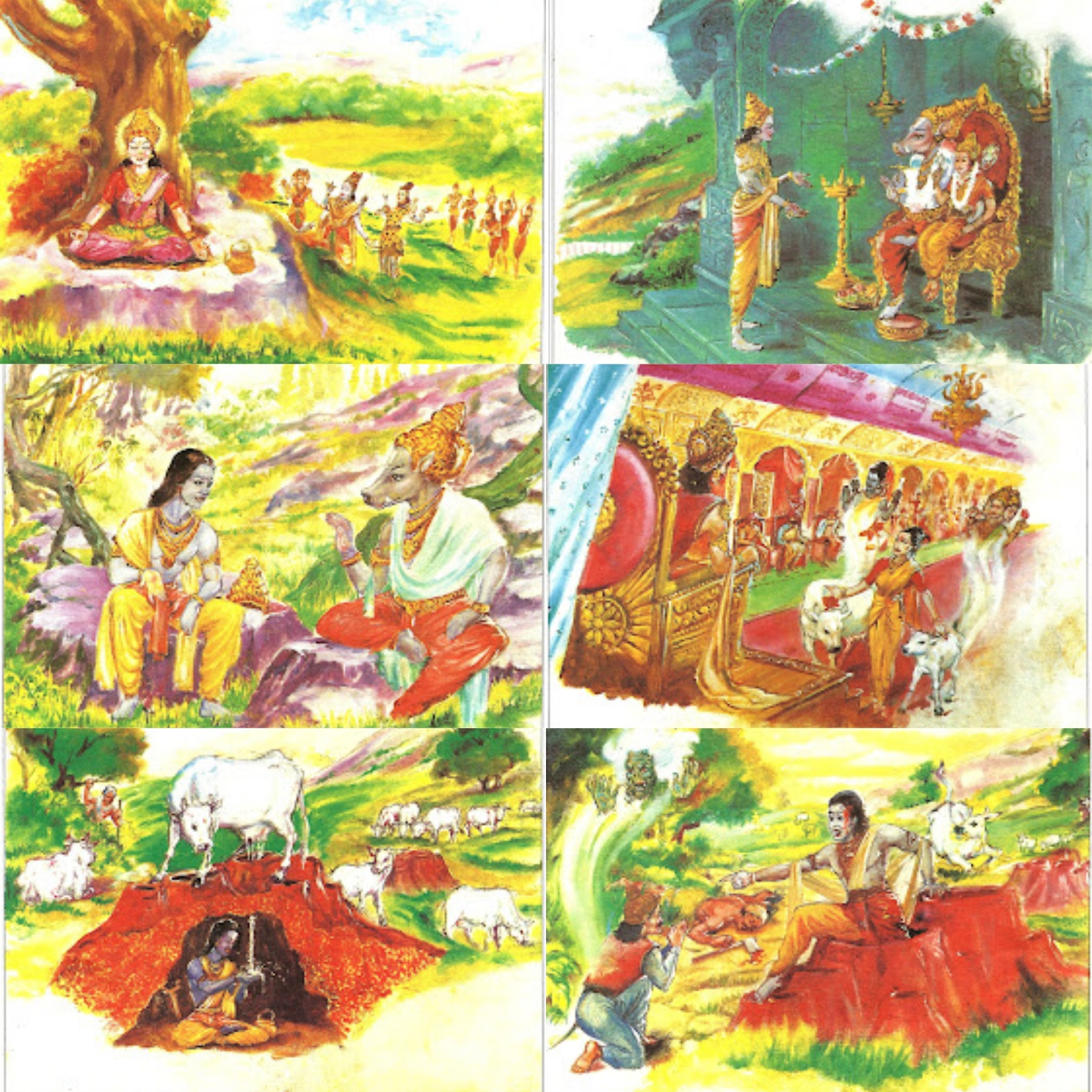
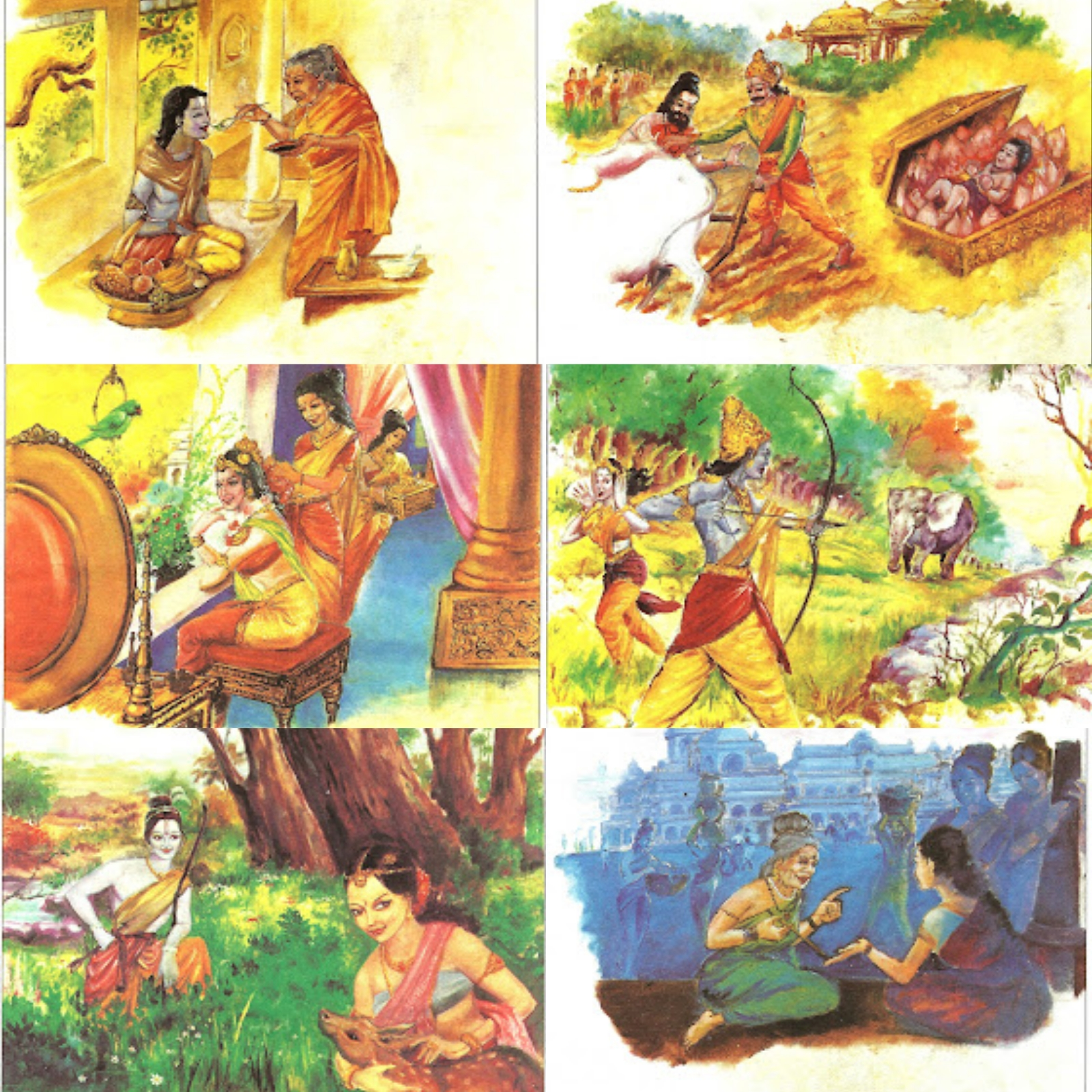
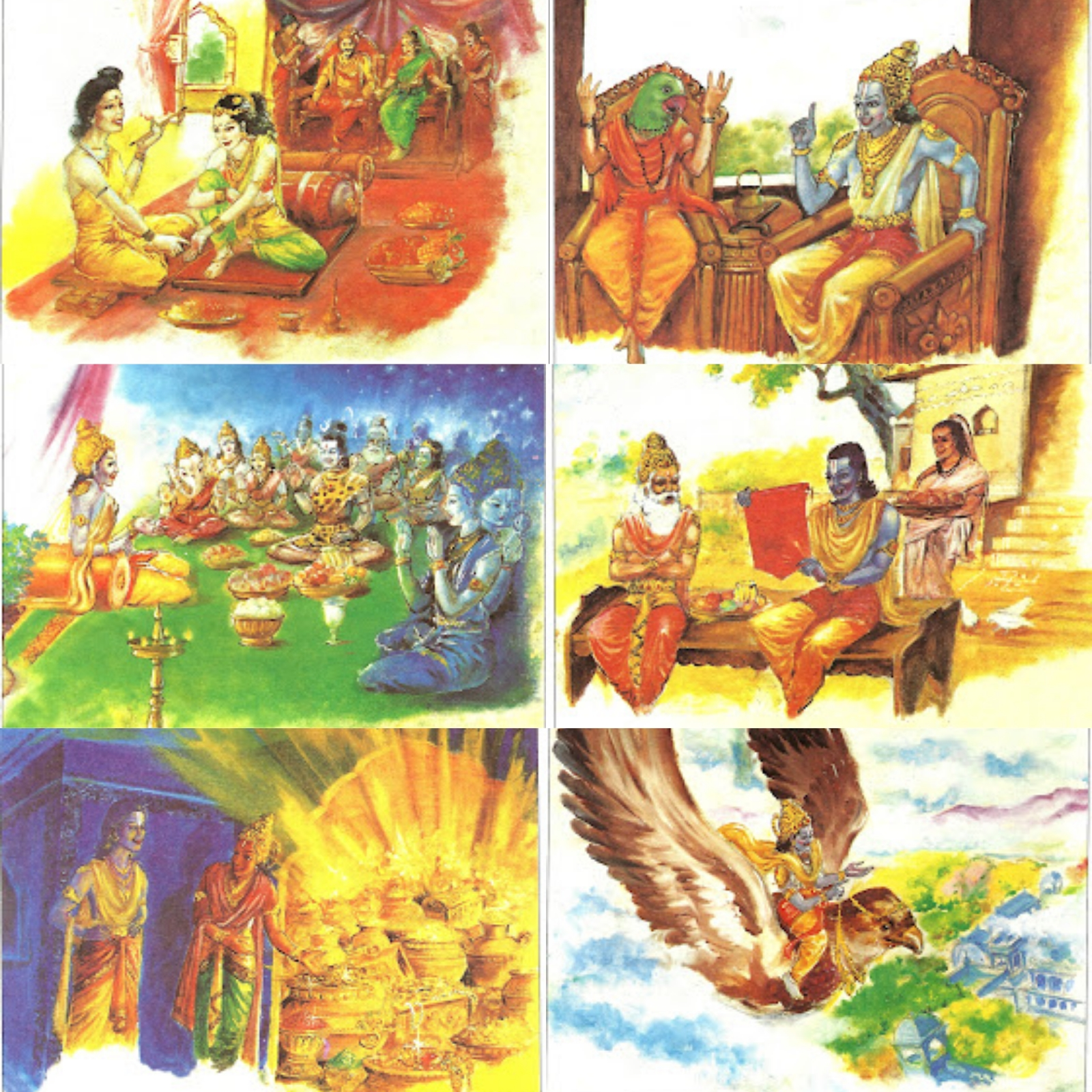
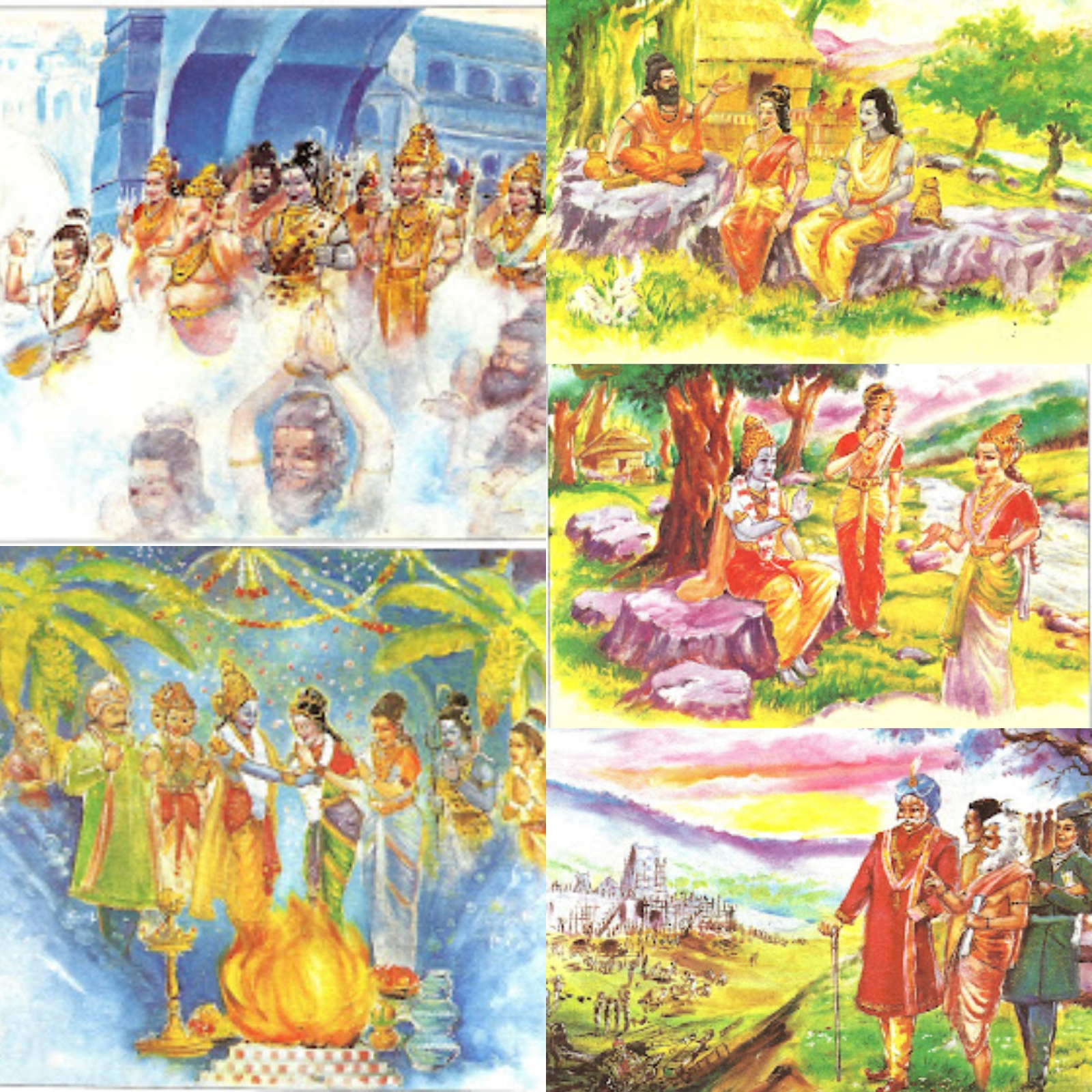
Balaji, known as Lord Tirupati Balaji, has a captivating Story that is deeply rooted in Hindu Tradition. The Tale of Lord Tirupati Balaji is cherished by Devotees and holds great Spiritual Importance.
Who is the Avatar of Tirupati Balaji?
The narrative commences with Rishi Bhrigu, one of the esteemed Saptarishis, who symbolized the opulence of God. Consequently, the Rishis, led by Rishl Kashyapa, sought his counsel when they decided to conduct a yagna on the banks of the Ganga prior to the arrival of Kaliyuga. When the sages were unable to respond to Narada’s inquiries regarding the purpose of their yagna and the deity they intended to extol, they turned to Bhrigu for guidance. He embarked on a pilgrimage to the temples of Brahma, Shiva, and Vishnu, seeking their advice before formulating a solution. However, none of the gods paid him any heed. In his fury, the sage had already struck Vishnu in the chest. In response, Lord Vishnu grasped the sage’s legs and gently pressed the additional eye on the sole of Bhrigu’s foot, which was believed to symbolize his arrogance. This action prompted the sage to acknowledge his mistake. Realizing his folly, the wise man implored for mercy. He then returned to the other sages to inform them that Lord Vishnu was deserving of their adoration. However, Goddess Lakshmi felt insulted by Rishi Bhrigu’s behavior and departed. Lakshmi’s departure left Lord Vishnu devastated. In his anguish, he commenced a period of fasting and meditation. Concerned about the situation, the deities Brahma and Shiva disguised themselves as a cow and calf, respectively. Surya, the Hindu sun deity, beseeched Goddess Lakshmi to assume the guise of a cowherd so that he could seek her assistance from the Chola Ruler. In the Venkata Mountains, the King’s newly acquired herd of cows could be seen grazing. Lord Brahma, disguised as a cow, began nourishing Vishnu from an anthill. The Queen grew agitated as she did not receive any milk from the cow and scolded the cowherd. The cowherd was perplexed when he witnessed the cow defecating on the anthill. Enraged, he seized an axe and attempted to slaughter the cow. Emerging from the anthill, Lord Vishnu intercepted the blow intended for the cow, thus sparing its life. Infuriated, Lord Vishnu pronounced a death curse upon the shepherd. He utilized the very axe that had slain an innocent cow and calf, beings that had provided him with. Due to the servant’s transgression, the King was cursed by Lord Vishnu to transform into an Asura. The compassionate deity pleaded with the king for forgiveness and then revealed that in his next life, he would be reborn as Akash Raja and marry his daughter. In his subsequent reincarnation, Lord Vishnu assumed the identity of Srinivasa and was born to a woman named Vakula Devi. According to Legend, Lord Krishna granted Yashoda’s wish to have him born to her in the Kali Yuga as a divine blessing. It is believed that Vakula Devi is the reincarnation of Yashoda. Srinivasa’s previous abode was in the forest. Padmavati, the daughter of Akash Raja, was an exquisite woman whom Lord Srinivasa eventually encountered. In accordance with Lord Vishnu’s promise to the previous incarnation’s Chola King, the two soon fell in love and desired to marry each other. To finance his wedding, Srinivasa borrowed money from Kubera and pledged to repay the debt with interest until the end of the Kali Yuga. Sage Narada informed Lakshmi about the wedding after it had taken place. The Gods and Goddesses were filled with anger and confronted Vishnu. Srinivasa’s decision to transform into a stone was influenced by the tensions between his two wives. It is also believed that Padmavati and Lakshmi, who stood on either side of Vakula Devi, were transformed into stone.
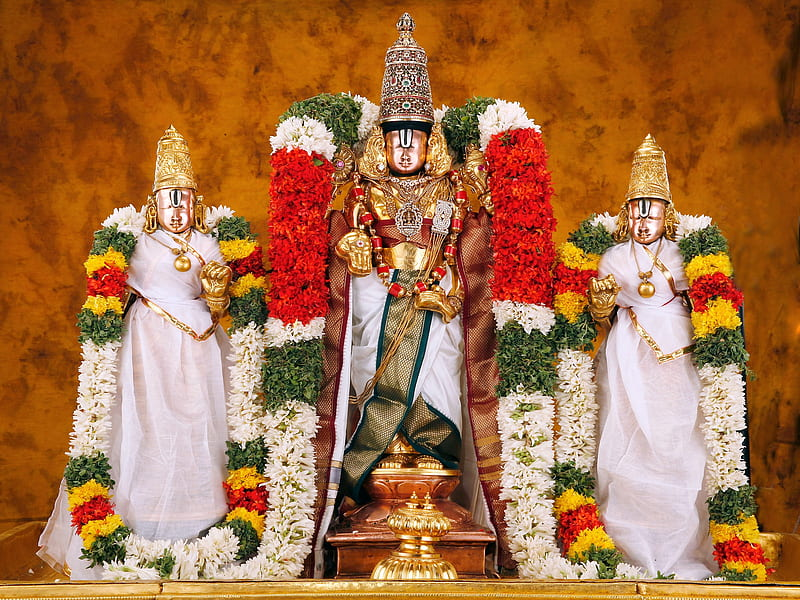
Tirupati Balaji holds immense significance in the hearts of devotees.
Lord Balaji is widely acknowledged as the divine embodiment of justice. According to popular belief, the two wives depicted lying on his chest symbolize the scales of justice and the sword of justice, while the Namam adorning his forehead represents his blindfold. Furthermore, his dark complexion is said to represent Shani, also known as Saturn. It is firmly believed that this deity meticulously assesses the virtuous and sinful deeds of those who offer prayers to him. Renowned for his ability to mete out both rewards and punishments, Lord Balaji holds a prominent position in the realm of justice. Devotion, love, and unwavering faith in the Lord are believed to invoke his benevolence, which in turn mitigates the consequences of one’s past actions.
The Tale of Neeladevi and Kubera’s Loan: The Significance of Hair Offerings at Tirupati.
Legend has it that during Sri Vishnu’s stay in the hidden region of Tirumala, he was accidentally struck on the head by a cowherd, resulting in the loss of a portion of his hair. Neeladevi, a royal maiden or Kumari from the Gandharava clan, witnessed this incident and believed that a deity as charming as Balaji should not have any imperfections. Driven by her determination to adorn the most beautiful Lord, Neeladevi took some of her own hair and placed it on his head. Pleased by her act of self-sacrifice, Tirupati blessed her and promised that all hair offered at his shrine would be dedicated to Neeladevi.
Another well-known belief is that Sri Venkateshwara borrowed from the treasury of the Yaksha King Kubera to finance his marriage with goddess Padmavati. The hair offered at the shrine is considered a repayment of that loan, and devotees happily offer their hair after shaving their heads as a gesture of gratitude, receiving the blessings of goddess Lakshmi in return.
The Tale of the Everlasting Lamps of Balaji.
Sri Venkateshwara, in response to the prayers of gods, goddesses, and his devotees, made a promise to reside in the region of Tirumala. A magnificent shrine called “Ananda Nilayam” was constructed for the Lord, as a testament to this divine promise. It is believed that Bhagwan Brahma himself established and lit two lamps in the sanctum, symbolizing the well-being and prosperity of humanity. Srinivasa, in his benevolence, blessed Brahma and assured him that these lamps would continue to radiate light until the end of the Kaliyuga Age. Only when the lamps are extinguished and the temple’s vimana collapses, will Srinivasa return to his celestial abode. Even today, the sacred lamps of Balaji continue to emit a divine glow, instilling faith in the hearts of countless devotees, affirming his eternal presence.
As the guardian and mentor, and as the omnipresent embodiment of Param-Brahaman, Lord Venkateshwara represents the Ancient Vedic principles of Hinduism. His true essence and magnificence can only be truly understood and experienced by those who surrender to him with utmost purity and devotion. Tirupati Balaji, fulfilling both material and spiritual aspirations of his devotees, serves as a radiant beacon of light, guiding many through the darkness of the Kaliyuga.
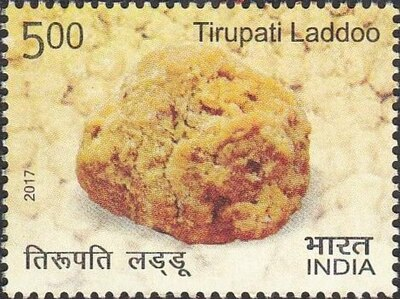
In 2017, as part of their cuisine series, the India Post unveiled a postal stamp that commemorated the Tirupati Laddu.
The Fascinating History Of The Tirupati Laddu.
The Tirumala Sri Venkateswara Temple is renowned worldwide for its significance as a place of worship. It is highly unlikely that any other religious site in the world would attract such a large number of pilgrims or generate as much revenue as the Tirumala temple does. On a daily basis, more than 60,000 devotees visit Tirumala to pay their respects. Lord Sri Venkateswara, who has a fondness for not only fragrant flowers and ornaments but also delicious food, generously shares his love for delectable cuisine with his devotees in the form of Prasadam.
During the reign of Sri Krishna Deva Raya, the court poet Tenali Ramakrishna bestowed the title ‘Thindimendayya’ (Voracious eater) upon the Lord, as he was unable to fathom the extent of the Lord’s food consumption. Historical records indicate that prasadam was offered to the presiding deity during the Pallava Dynasty. Subsequently, Devaraya-II granted three villages and 200 panam for daily offerings. Amatya Shekara Mallanna, an officer of Devaraya-II, made arrangements for Naivedyam and Nityadiapam to Lord Venkateswara, introducing a timetable for food offerings. The remaining food would be distributed to the pilgrims free of cost, and this prasadam came to be known as Tiruppongam. Over time, Sukkiyam, Appam, Manohara Padi, and Vada were added to the list of offerings to the deity. Under the Vijayanagara Rulers, the Tirumala Temple received generous patronage. The inscriptions refer to this support as Avasaram, a Sanskrit term meaning food. Similar food offerings were also instituted by Maharaja Sri Shudaji Bhanuji Pantulu, as mentioned in the inscriptions of 1554, 1579, and 1616. It is evident from the inscriptions that Aliya Ramaraja’s food offerings ceased after the Golkonda Kings conquered the country, leaving only a few individuals to continue serving in the temple, who were in need of wholesome food like suddhannam (cooked food). Gradually, there was an increasing demand for the prasadam at the Tirumala temple. In 1803, the Madras Government recognized a problem and initiated the sale of Prasadams. The pilgrims specifically requested more Vadas as they had a longer shelf life compared to other Panyarams. Subsequently, the Madras Government introduced the sale of Bundi, which served as the initial form of Laddu. It was not until 1940 that Laddu took its recognizable shape. During the period from 1996 to 2001, the TTD took on the responsibility of preparing Laddu and other prasadams themselves. However, increasing the quantity of Laddus per day became challenging for the TTD due to the influx of pilgrims. The officials had to ensure the distribution of an equal or greater number of Laddus while also catering to other ‘Sevas’ and Kalyanotsavams. Meeting this demand became an arduous task for the officials.
The kitchen of the Lord, known as Potu, is where prasadam is meticulously prepared using only firewood. On auspicious occasions such as Ugadi, the dedicated staff crafts special laddus and presents them as an offering to the divine. To date, the largest laddu ever offered to Lord Venkateswara weighed an impressive 32 kg. This monumental creation was skillfully crafted by the archakas, the hereditary priests, in the sacred temple kitchen. In order to enhance the working environment, the Potu has been expanded, resulting in improved sanitation and hygiene. As part of this upgrade, stainless steel trays are now utilized to store the prasadam, ensuring its freshness and quality.
In Tirumala temple, three varieties of Laddus are being made, namely Asthanam Laddu, Kalyanosthavam Laddu, and Proktham Laddu. The distinction among these three types of Laddus is as follows:
Asthanam Laddu : This type is specifically prepared for special festive occasions and can only be distributed to distinguished guests such as the President of India, Prime Minister, Presidents, and Prime Ministers from other countries. They weigh 750 grams and require a larger quantity of Cashew nuts, Almonds, Ghee, and saffron flowers compared to the allotted Dittam.
Kalyanotsavam Laddu : These Laddus are given to individuals who participate in the Kalyanotsavam and Arjitha Seva Grihastas. They are known for their delicious taste compared to the smaller Laddus. Those interested in obtaining Kalyanotsavam Laddu can purchase them for Rs. 100/- each, as there is a high demand for these Laddus in Tirumala.
Proktham Laddu : This is a smaller Laddu that is distributed to regular pilgrims visiting the Tirumala Temple. Weighing 175 grams, the estimated cost for preparing each Laddu, according to TTD records, is Rs. 25. However, the TTD offers these Laddus at subsidized rates for the benefit of common pilgrims. Pilgrims who have completed their Darshan can purchase two Laddus for Rs. 20.
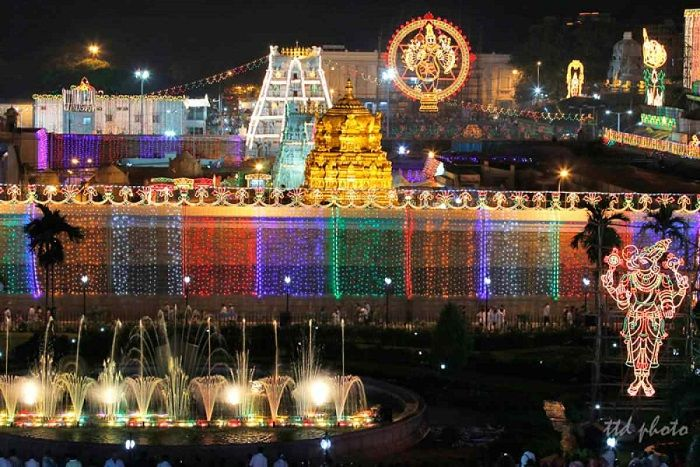
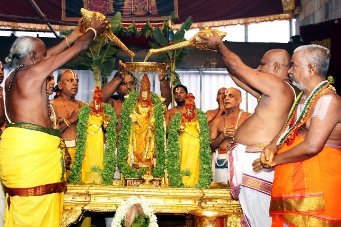
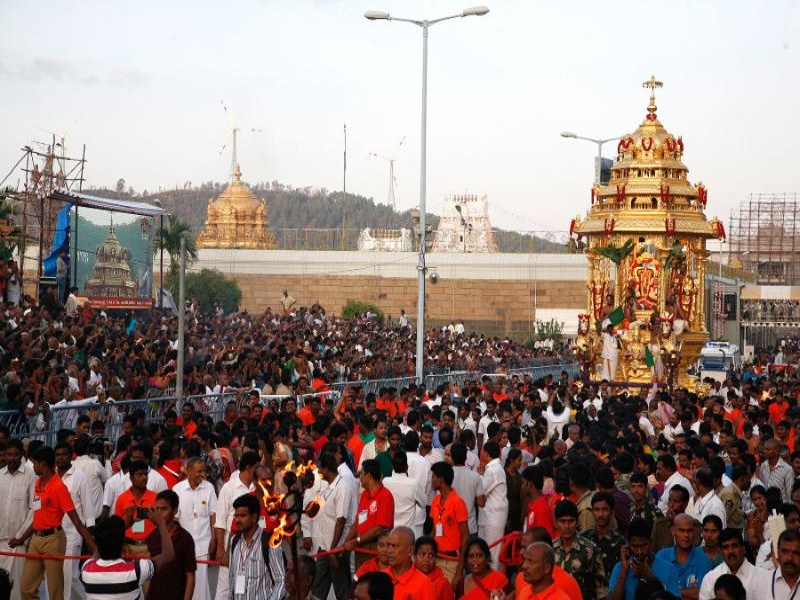
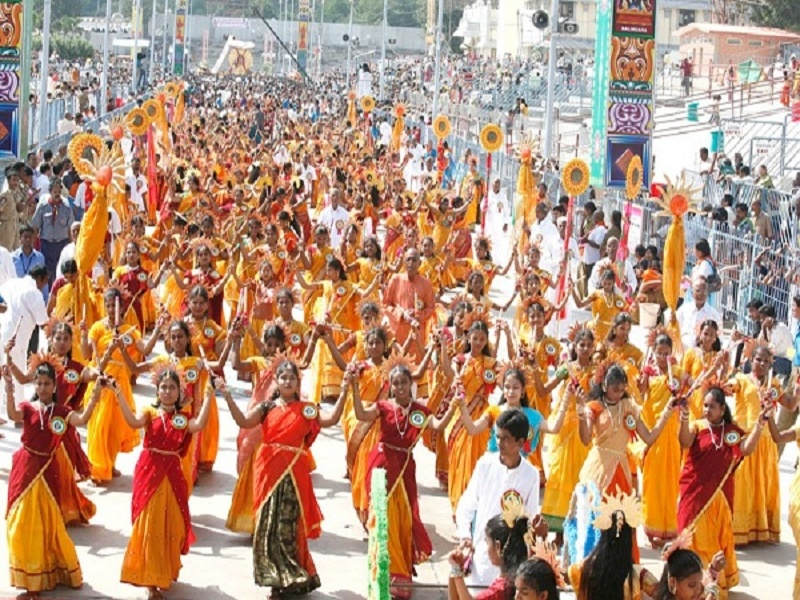
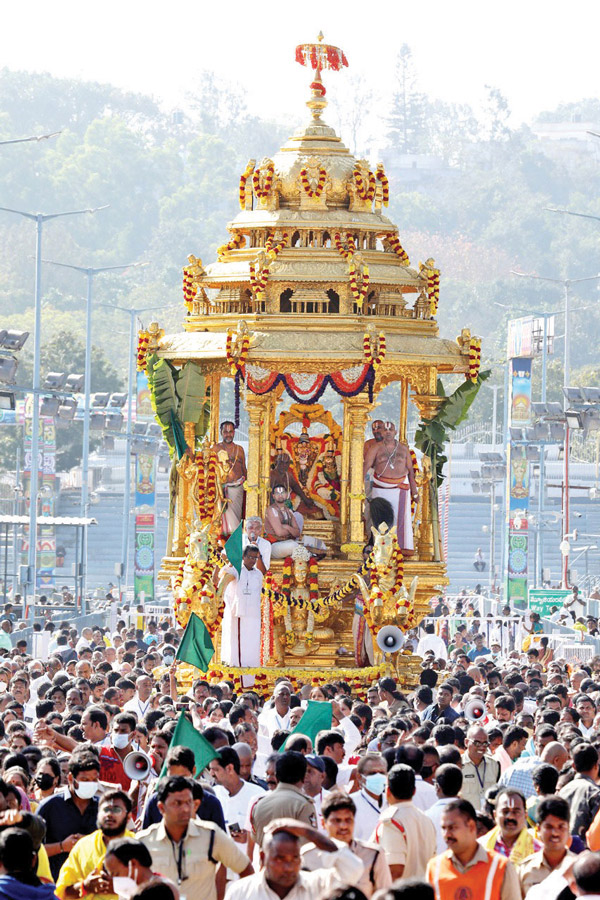
Tirupati Balaji’s ‘Brahmotsav’
Festivals and Celebrations
The Tirupati Temple is renowned for its magnificent festivities and observances, which captivate a multitude of devotees. Among the most notable celebrations is the yearly Brahmotsavam, a nine-day spectacle dedicated to Lord Venkateswara. Throughout this festival, the deity’s idol is paraded on various vehicles known as vahanas, while an array of rituals and cultural performances are meticulously arranged. Additionally, the temple commemorates other significant festivals such as Vaikunta Ekadashi, Rathasapthami, and the annual Teppotsavam, a captivating boat festival held at the temple tank. Each of these festivities contributes to the temple’s liveliness and entices devotees from both nearby and distant locations.
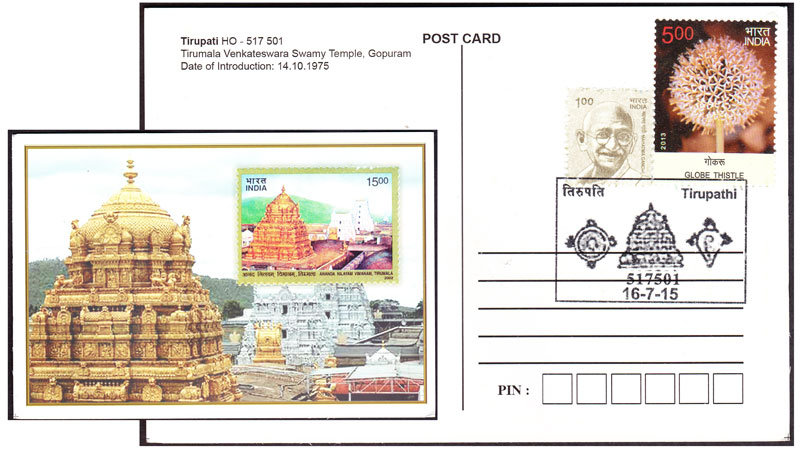
Permanent Pictorial Cancellations
India 2015 Tirupati Tirumala Venkateshwara Swamy Temple Gopuram Hinduism cancelled with Stamp Picture Postcard Issued By India Post.
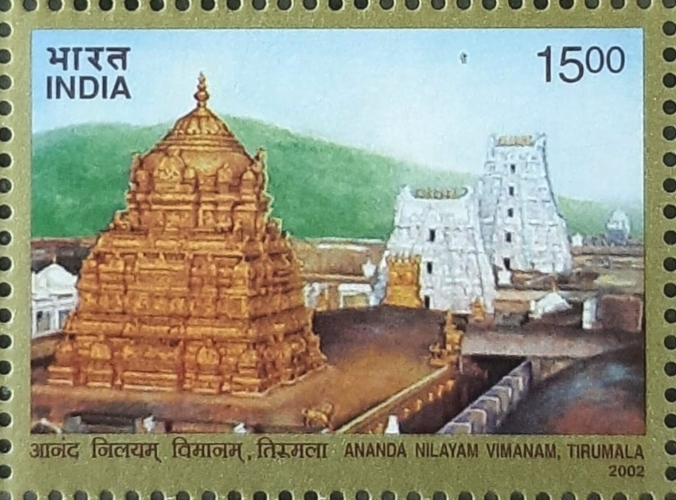
India 2002 Ananda Vimana Nilayam Tirupathi Tirumala Temple Stamp
The Tirupati Balaji Temple stands as a testament to the rich history and culture of India. It is a symbol of resilience and devotion, having withstood invasions and attempts to destroy it over the centuries. The temple complex itself is a marvel of architecture, with intricate carvings and sculptures adorning its walls. The main deity, Lord Venkateswara, is worshipped in the form of a large stone idol, adorned with precious jewels and gold. The journey through time to trace the origins of Tirupati Balaji Temple is a fascinating one. It is not just a religious pilgrimage, but also a journey of discovery, where one can learn about the Ancient Hindu scriptures, the rich heritage of India, and the stories of devotion and resilience that have kept this temple standing for thousands of years. The temple continues to attract millions of devotees from all over the world, and its legacy and significance will continue to endure for generations to come.
Reference
Article Sources :
- Anand Prakriti, Tirupati Balaji Temple: Stories, History, Geography, Secrets, Article On December 2023.
- Dr. V. Thimmappa, Preparation of Tirumala Srivari Laddu: A Critical Study, GJRA – Global Journal For Research Analysis, Volume-4, Issue-4, ISSN No 2277 – 8160, April-2015.
- History of Tirupati, Article Access On 16th April 2024.
- Our Temples Our Heritage: Tirumala Venkateshwara Temple, Tirupati Balaji, Article Access On 16th April 2024.
- The Sensational Tirupati Laddu, Article Access On 16th April 2024.
- Tour Pilgrimage, Tirupati Temple History: A Sacred Journey Through Time, Article Access On 16th April 2024.
- Tirupati Balaji Ki Katha, Maharashtra Warriors, YouTube, Part 1 & Part 2
- Tirumala Tirupati Devasthanams. Temple Legends.
- The Srinivasa Kalyanam Story, Tirupati Balaji Marriage.
Images & Video Sources :
- Events & FestivalsTirumala Brahmotsavalu.
- History of TTD Venkateswara Temple, Tirumala.
- Permanent Pictorial Cancellations,
- Santi Art Gallery, Tirupati Temple in Framed Art prints Online.
- Tirupati Laddoo INDIAN CUISINE India stamp, Philacy.com.
- Tirupati Tirumala Postcard, Collector Bazar.
- Tirupati Balaji Ki Katha, Maharashtra Warriors, YouTube, Part 1 & Part 2
- The Srinivasa Kalyanam Story, Tirupati Balaji Marriage.
- The Ultimate Pilgrimage, Inside Tirumala Tirupati, National Geographic Channel Episode 1, Season 1.
- May 15, 2024
- 6 Min Read


